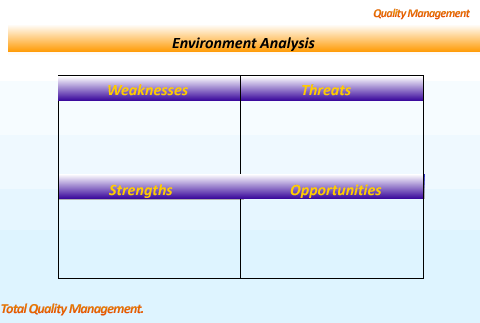Environment Analysis
When establishing a competitive advantage in business strategy, Porter (1985) defined a leading strategy in costs or in differentiation as shown in the image in the previous lesson. As Grant states it (1995), one of the most important contributions of TQM has been to refute that myth.
Quality, in general terms, is more an advantage in costs than an advantage in differentiation. This is due to the fact that the majority of enterprises incorporate quality policies. As a result, it is no longer a basic resource but a fundamental one; as a standard or entry barrier. TQM can actually be a combination of both strategies. As we have seen in previous lessons, TQM produces a cost reduction while incorporating constant improvement techniques (such as benchmarking) combined with appropriate human resources policies, to sustain an entry barrier against competitors, a specific Know-How.

Before we decide if we are going to use TQM as a strategy tool, we must be sure that our organization, employees, and clients will benefit from this decision. Thus, we need to perform an internal and external analysis. We can use the WTSO analysis (Weaknesses, Threats, Strengths, Opportunities).